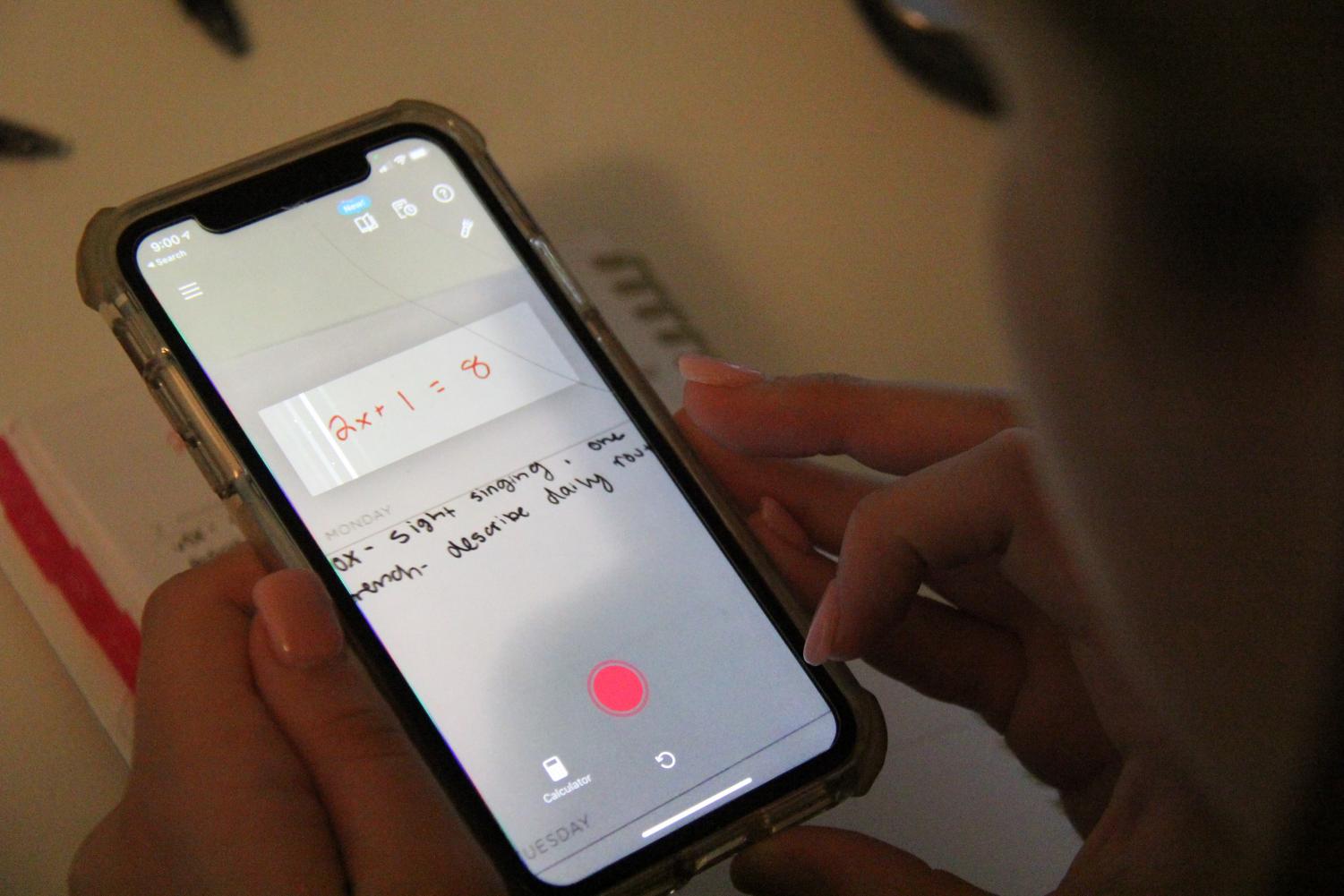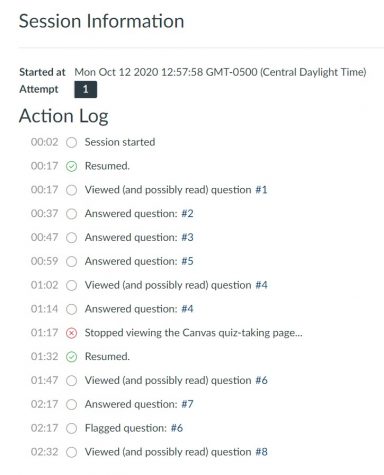During remote learning, teachers and students have had to adapt alternate learning techniques. One area that has required extra thought by educators is how to control academic dishonesty. Officials at the University of Missouri discovered that students were creating group chats with others in the same course and using them during tests to take pictures of questions and share answers.
But that technique is not limited to universities. That practice has found its way into high school classrooms as well. And although the virtual learning situation arguably makes cheating harder to catch, if students are caught, cheating has the same consequences when it takes place in an online situation as it does if it had taken place in a classroom–including, in some cases, suspension.
Different departments are using different methods and strategies to try to prevent students from cheating on assessments. Freshman Evelyn Matusiak’s a math teacher with a unique method.
“Mrs. (Cheryl ) Zimmerman has us put our videos on in class. She also had us angle the camera to show our hands so she can see what we’re doing. Mrs. Zimmerman also has us participate in class by having us turn on our cameras. She calls on us and encourages us to answer problems and ask questions,” Matusiak said.
However, it is not just Zimmerman’s math class that is taking preventative measures to stop academic dishonesty. Some teachers are relying strongly on the honor system since they are without many other options.
Remote learning has made learning more difficult for students and has also required many teachers to begin putting extra thought into how to control academic dishonesty since traditional methods are no longer available. These various adapted methods tend to vary by department and by necessity.
Associate Principal Mike Franklin has witnessed these difficulties.
“It is very difficult for teachers to address, or even begin to address academic integrity,” Franklin said. “The kids just aren’t there. Something we got good at over the years was making sure our kids are doing the right things.”
World language teacher Caralyn Harmon, who teaches Spanish, understands that with remote learning there is just a lot that is out of her control.
“I feel like with remote learning I just don’t have enough control over stopping cheating. Unfortunately, I just have to be OK with knowing that students can cheat, and I try to make things more do-able. I reiterate that the work should be in their own words, and try to make them understand that it is okay to make mistakes,” Harmon said.
However, there are some very specific and district policies addressing the consequences of academic dishonesty.
The Rockwood School District student handbook outlines these guidelines: “First offense: Student/teacher conference, and/or administrative conference, instruction on academic honesty, parent contact, and possible consequences. Subsequent offenses: Office referral, parent contact, up to 10 days in-school suspension and possible consequences.”
To help prevent students from having to face these, teachers in different departments are starting to develop new techniques. Franklin has been supportive of these techniques and thinks that they have helped keep the rate of academic dishonesty low.
“I don’t know that we’ve seen much change really. I think that the conversations that teachers are having with kids are working and they’re being honest about not doing it.”



